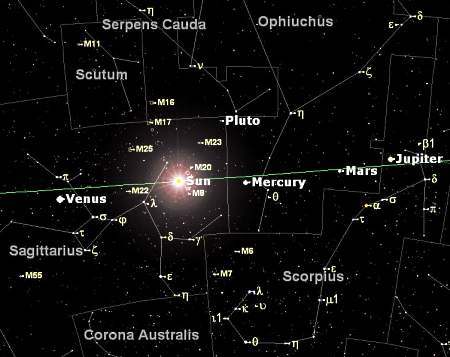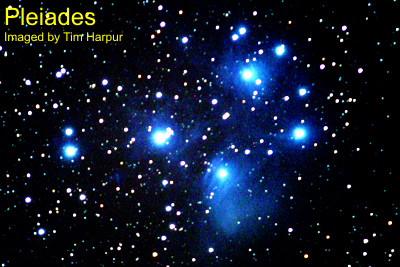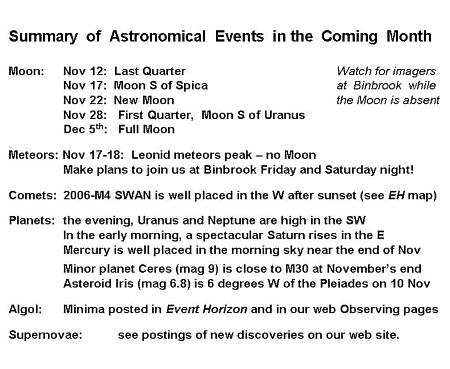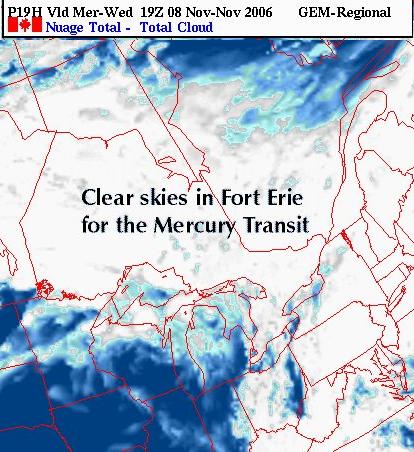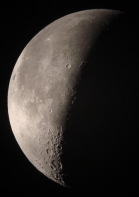While Binbrook was fogged out, November 24th, Grimsby did not suffer the same fate. Interestingly, I recently acquired a set of three gauges that give my observatory readings on temperature, barometric pressure, and humidity.
When I started observing at 7pm that evening, the humidity was just over 70% and the limiting magnitude was about 4.5. By 9:30pm, the humidity was nearly 80% and only stars brighter than mag. 3 (and higher than 50 degrees) were visible to the naked eye. Between those two readings, however, I did manage to do some useful viewing.
I spent a little while pushing my 6″ reflector through Pegasus and Andromeda, but after checking my log realized I had no entries for Lacerta. Although Lacerta was barely visible to the naked eye, the area bordering Cepheus was easy to locate and the following objects were new finds for me:
IC 1434 – a fairly circular open cluster of about 3 dozen 10-12 mag. stars with about the same amount showing dimly among them. Near the centre of this cluster is a tiny binary that I only noticed with a barlow at 114X. Increasing the magnification to 171X allowed a clean but narrow separation.
IC 1442 – just over a degree NE of IC 1434, this open cluster of about 40 stars has an interesting rectangular shape to it. It also features a bright “waistband” of 3 stars reminiscent of Orion’s Belt.
NGC 7245 – with a 21mm eyepiece, this open cluster almost fits in the same 1 degree FOV with IC 1442. More compact, and richer with stars than 1442.
NGC 7235 – I crossed the border into Cepheus for this one. An elongated open cluster spanning at least 2 degrees, it features a tiny but very appealing carbon star in the middle of the “stream”. There is a whiter star that may catch your eye but tight focus will bring out the beauty in the carbon one.
HD213306 – AKA Delta Cephei. If you’re into pretty double stars then you should have this attractive yellow and blue pair on your list.
LATER THAT NIGHT: Finding myself awake at 5am I toyed with the idea of going out again for, after all, the Clear Sky Clock was reading near perfect conditions – Wrong. The fog had made it to Grimsby.
